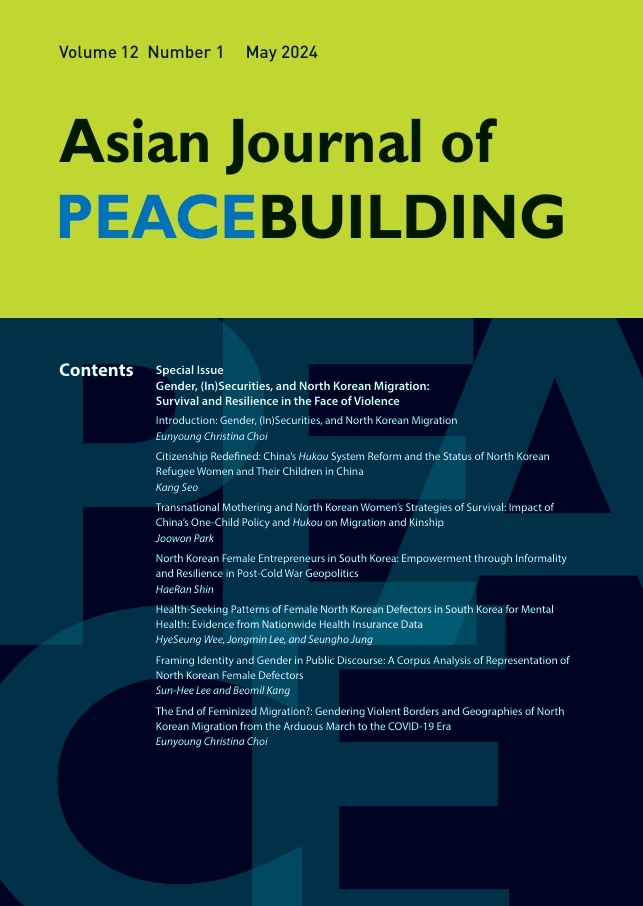This article examines the spatial and temporal changes of North Korean (NK) migration by analyzing the interactive process between NKs’ efforts to cross borders amidst changing geopolitical and economic circumstances and the activities at the domestic, local, state, and international levels to manage displacement from a gender perspective. In doing so, I argue that the border between North Korea and China became violent and that NK migrations became spatially gendered and class-stratified. The proportion of NK women entering South Korea remains high, primarily due to the secondary migration of those who have long resided in China in de facto marriage relationships with Chinese men. In contrast, among recent direct defectors, NK men constitute a significant proportion and they often play an active role in family migration.
Back Issues
Special Issue_Gender, (In)Securities, and North Korean Migration: Survival and Resilience in the Face of Violence
The End of Feminized Migration?: Gendering Violent Borders and Geographies of North Korean Migration from the Arduous March to the COVID-19 Era
Eunyoung Christina Choi pp. 129-153 doi: 10.18588/202405.00a471
PDF Download

